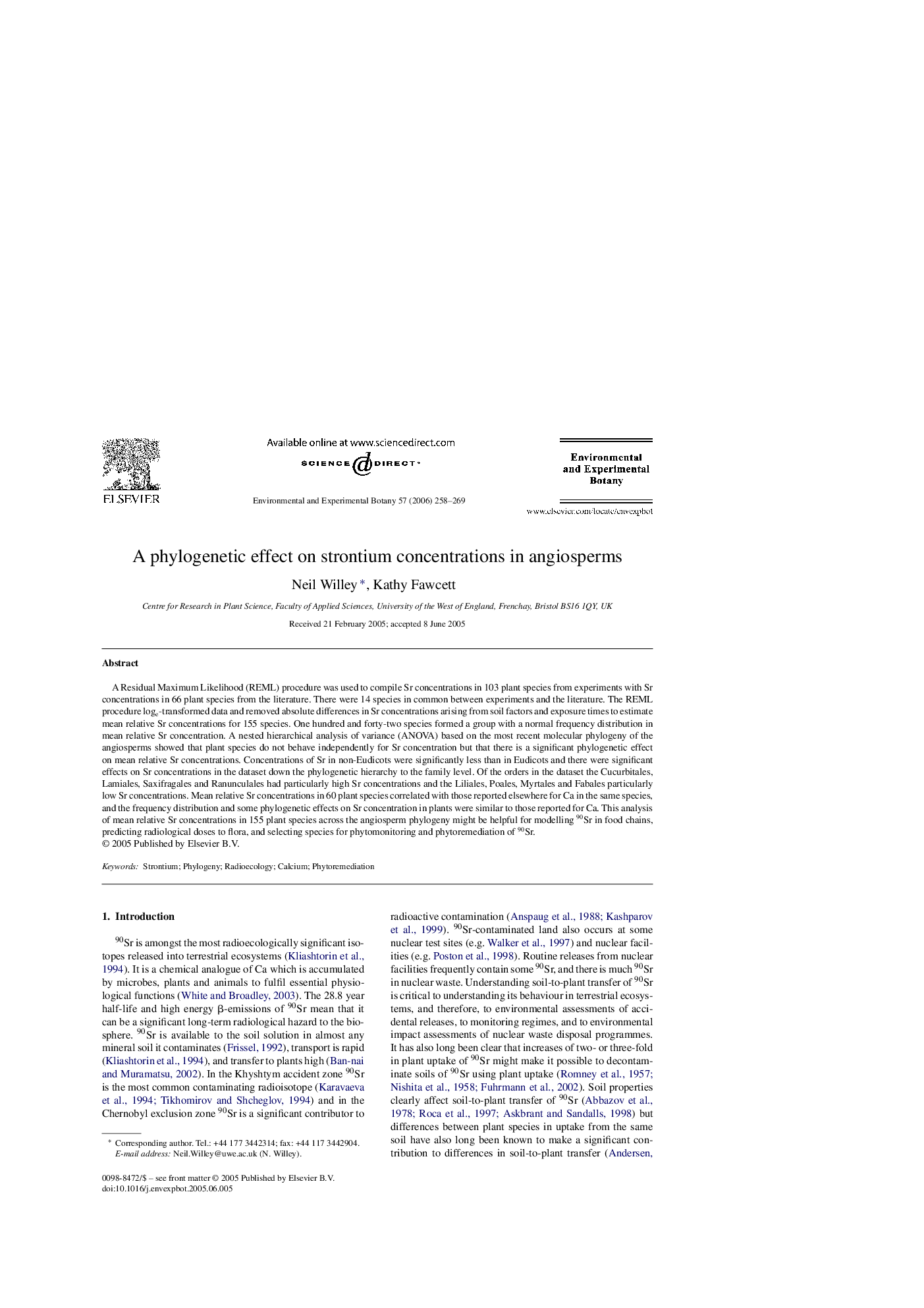| Article ID | Journal | Published Year | Pages | File Type |
|---|---|---|---|---|
| 4555552 | Environmental and Experimental Botany | 2006 | 12 Pages |
Abstract
A Residual Maximum Likelihood (REML) procedure was used to compile Sr concentrations in 103 plant species from experiments with Sr concentrations in 66 plant species from the literature. There were 14 species in common between experiments and the literature. The REML procedure loge-transformed data and removed absolute differences in Sr concentrations arising from soil factors and exposure times to estimate mean relative Sr concentrations for 155 species. One hundred and forty-two species formed a group with a normal frequency distribution in mean relative Sr concentration. A nested hierarchical analysis of variance (ANOVA) based on the most recent molecular phylogeny of the angiosperms showed that plant species do not behave independently for Sr concentration but that there is a significant phylogenetic effect on mean relative Sr concentrations. Concentrations of Sr in non-Eudicots were significantly less than in Eudicots and there were significant effects on Sr concentrations in the dataset down the phylogenetic hierarchy to the family level. Of the orders in the dataset the Cucurbitales, Lamiales, Saxifragales and Ranunculales had particularly high Sr concentrations and the Liliales, Poales, Myrtales and Fabales particularly low Sr concentrations. Mean relative Sr concentrations in 60 plant species correlated with those reported elsewhere for Ca in the same species, and the frequency distribution and some phylogenetic effects on Sr concentration in plants were similar to those reported for Ca. This analysis of mean relative Sr concentrations in 155 plant species across the angiosperm phylogeny might be helpful for modelling 90Sr in food chains, predicting radiological doses to flora, and selecting species for phytomonitoring and phytoremediation of 90Sr.
Related Topics
Life Sciences
Agricultural and Biological Sciences
Ecology, Evolution, Behavior and Systematics
Authors
Neil Willey, Kathy Fawcett,
